Today we worked more on interaction matrices and calibrations during the day.
In the evening, Phil and T.J. spent some time optimizing and testing Clio. Clio got to move to the big computer in the Clay control room for the first time (instead of running it off Phil’s laptop). Here are some pictures of the big event.
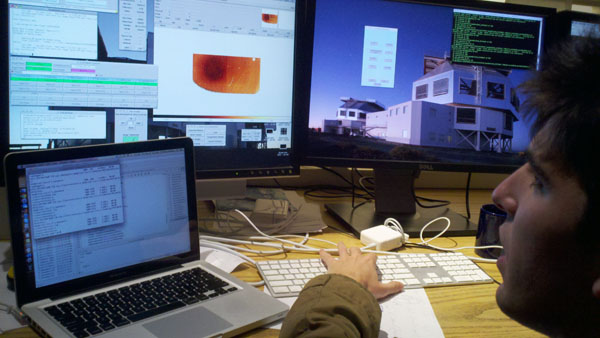
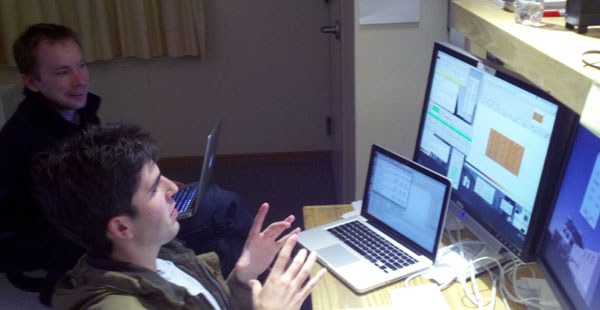
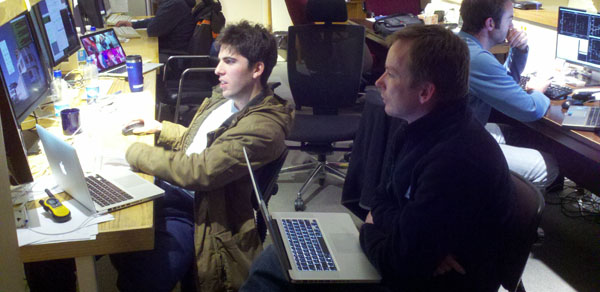
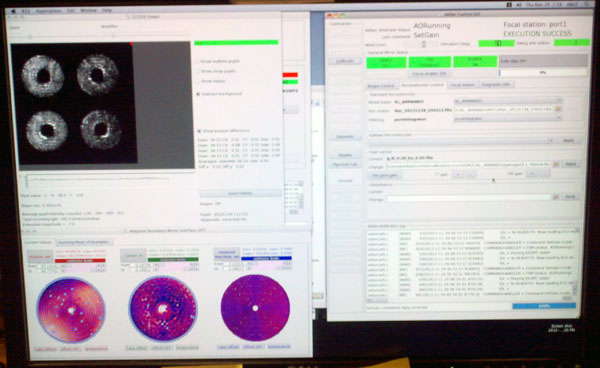
Jared is taking the slopes from the wavefront sensor and multiplying them by the reconstructor to determine the phase of the wavefront (including adding back in the high order terms that are above our cutoff frequency). He writes the residual wavefront error to the VisAO FITS headers. He also records the gimbal position so we know the position of the star in the image with respect to the center line set by the AO Pyramid. Jared has calibrated the gimbal position and the wavefront error using the focal plane. Soon, we will only need the VisAO FITS headers, not the images themselves!
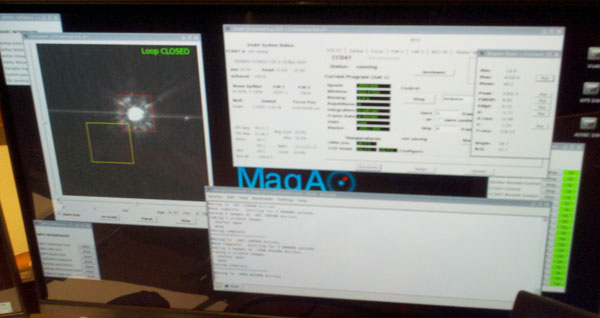
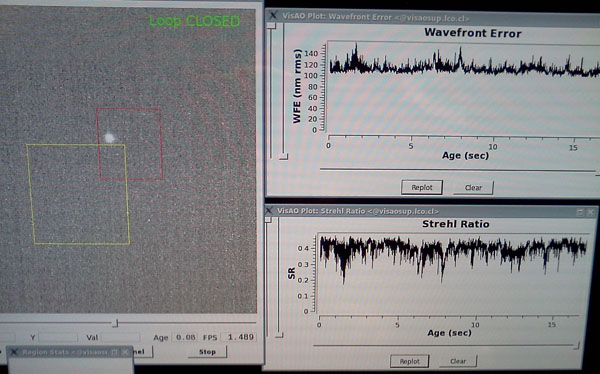
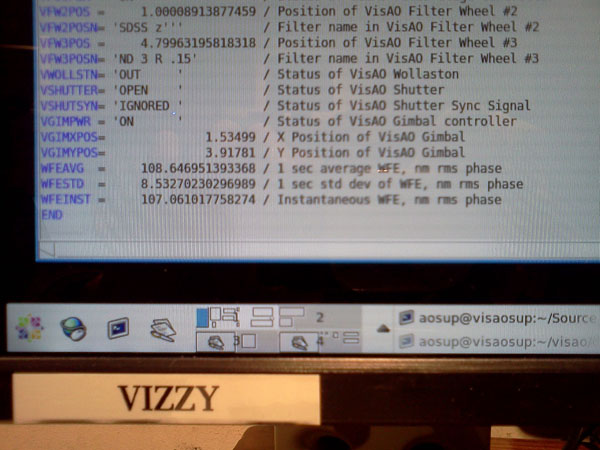
Sunrise from this morning:
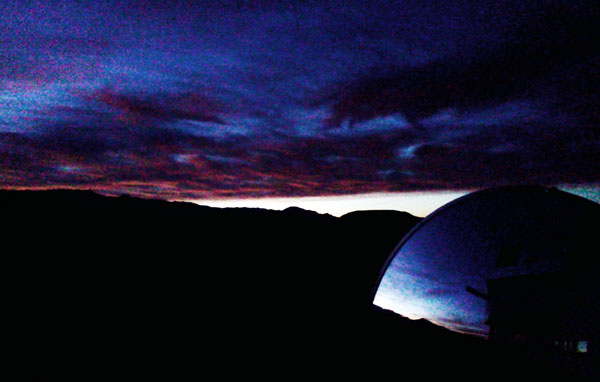
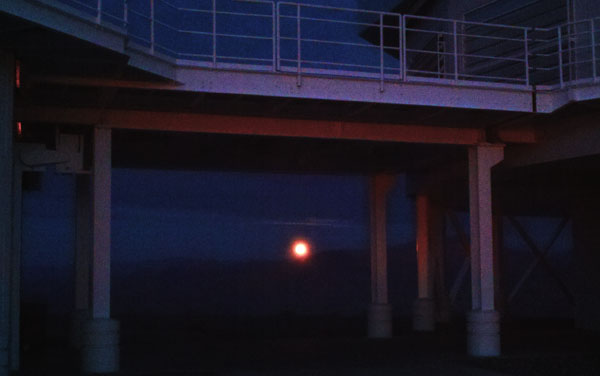
Jared: I record the wavefront error and position of the star in the FITS headers.
Katie: So what do we need the VisAO CCD for anyway?
Kate: To calibrate the FITS headers!